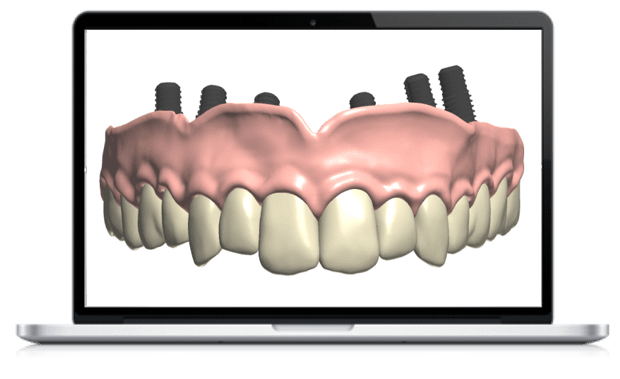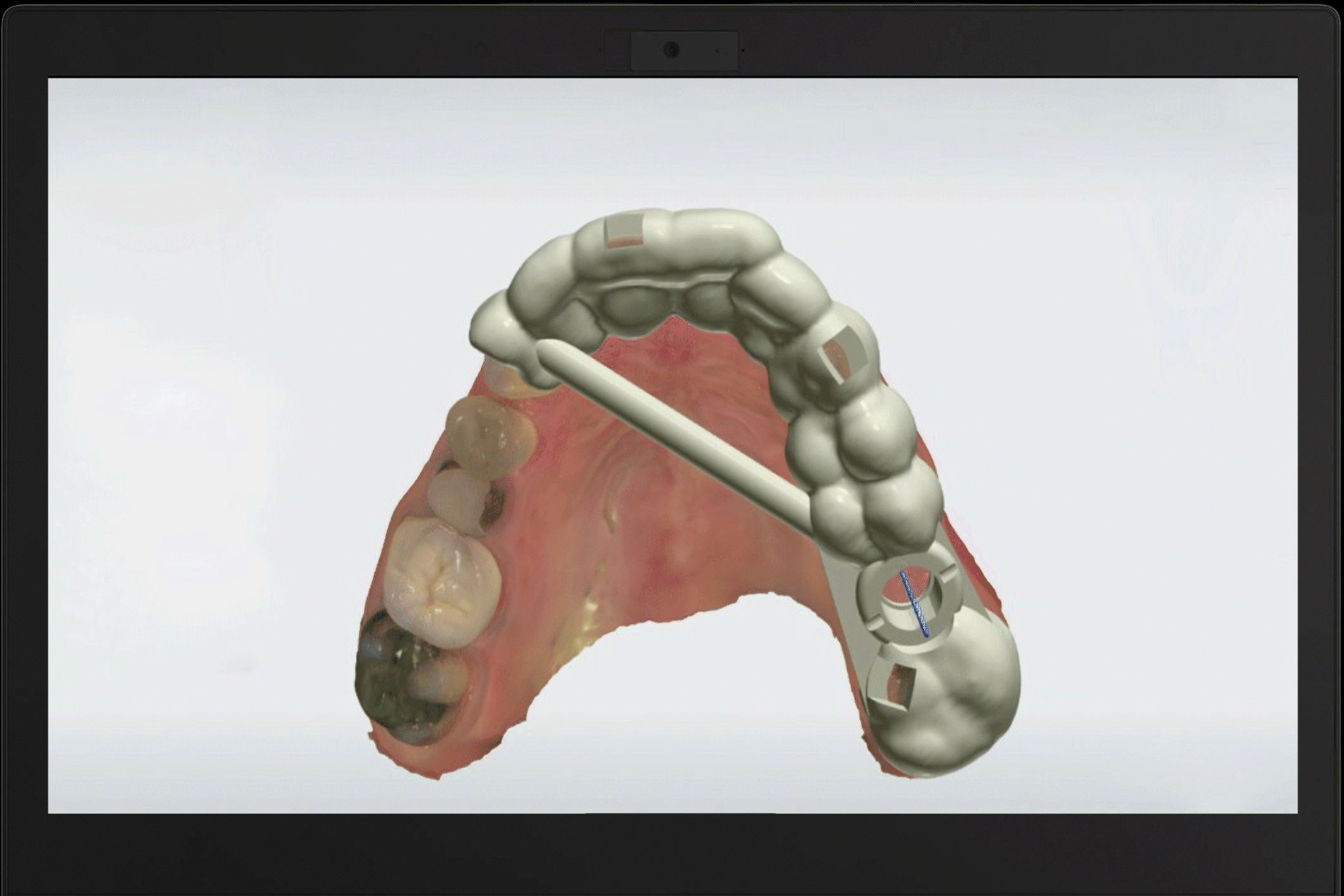- Home
- Blog
- Explore treatments
- Get out of your comfort zone
If I need an implant, I'm going to someone doing guided surgery
Dr. Amirali Zandinejad is a widely published and cited author, practitioner, and Director of the AEGD Residency Program at Texas A&M University. He took a few minutes with us to talk about digital dentistry – a subject he is very passionate about. He explained why he thinks doctors should be digital and what he believes is holding them back from adopting the new technologies.
“I work with many different generations of dentists teaching, presenting CE’s, and practicing. One thing I have noticed is that doctors do not like change. They are not ready to come out of their comfort zone.
But probably more importantly, many do not see the benefits of digital dentistry.
For me, going digital means more efficiency, more options and time savings. It makes our workflows much easier and increases efficiency. But many doctors never experience that benefit because they are afraid of trying or getting out of their comfort zone.
I believe that if they experienced the advantages of digital workflows, they would come onboard. Afterall, the goal for every single dentist is do things faster, more reliably, more predictable and have patients spend less time in the chair.”
Going digital with your dentistry
When Dr. Zandinejad first tried intraoral scanning many years ago, he experienced what many other practitioners had: a slow, cumbersome tool.
He believes that initial bad taste is what still holds many professionals back from adopting an intraoral scanner. Even when scanners are radically different from years ago.
“I started with intraoral scanners that took us a very long time to scan the patient, both full arches.” Dr. Amirali Zandinejad
“At that time, I could do a conventional impression much faster in 10 or 20 minutes. So why would I switch?
These issues do not exist anymore. Nowadays, all the scanners are good. So now it is about better understanding the advantages of digital workflows.
From hours of chair-time to just 30 minutes
For example, in those days with chairside composite and mock op, we might spend hours, to add composite, take pictures, take impressions, in order to create that ideal smile. But now, it is so much easier for me with digital smile design. Sometimes I don’t need to have the patient be present. Instead, I can scan the patient (ISO and facial scan), do the smile design, I might print it, even the mockup with printed or milled template and I’m changing what maybe took three to four hours of chair-time to just thirty minutes. That is a tremendous advantage.

As a prosthodontist, in the old days I would prep an entire arch in a morning, and then I would need the whole afternoon to create a good provisional.
Now with digital dentistry, I scan the patient, I do the prep and superimpose my diagnostic wax up and have the prefabricated provisional ready ahead of my preps. That’s now thirty minutes for provitionalization.
I now work with simulated patients. The patient is scanned and imported into my system. I no longer need my patient present for try-ins.”
“I have their face on my computer and I make all the changes. When we are close to the final result, we bring the patient back.” Dr. Amirali Zandinejad
Dental implant workflow: a doctor that uses implant surgical guides is more predictable
“In the private practice I work in, my surgeon does not touch a single implant without guided surgery. Because it is so much more predictable and safer and faster. Planning is done behind the scenes, which makes us safer chairside.
Digital workflows enable us to work as a group. My surgeon and I can design a surgery. We can work on the surgical and restorative concept together and print or mill a surgical guide to make the procedure more predictable. We prosthetically plan our implant procedure on a PC.
Implants placed using guided surgery are much safer and more predictable in my view.

Personally, if I need an implant, I’m going to someone who does guided surgery. From my experiences, I am no longer interested in freehand.
In fact, I would say a doctor that uses guides is more predictable. So going digital is not about being young or progressive, but about being a more predictable and maybe ever more accurate. Plus, your results are going to be faster.
But even with all this innovation, I believe that much of digital dentistry’s potential has yet to be realized. Digital treatments will keep growing. We will keep finding new ways to make better treatments and make dentists more efficient.”
Your lab is digital - here’s how you can get started
“Nowadays, most dental technicians work digitally. Why would dentists want to introduce a source of error by sending a stone cast to them?
The best way for doctors to get onboard is to start with an intraoral scanner. The first step is to scan and begin communicating with your lab digitally.
As mentioned, there’s just so many benefits to the practice using a scanner. It takes five minutes to send the scan. The lab can look at the scan and provide immediate feedback, even while the patient is still on the chair. All dentists should be exposed and informed about advantages like this.
I think that more and more doctors will be getting onboard. First, scanners are falling in price and can no longer be considered a luxury item. Secondly, patient preference and easier lab communications, and possibly your business growth may become dependent on digital technology, intraoral scanners are becoming a necessity for the practice.
Another factor driving adoption can be continuing education. Companies like 3Shape need to reach out to dentists and show them the capacity of digital dentistry.
Not every doctor has the time to read every paper documenting the efficiency of scanners but courses and demos where doctors get to try a scanner would be very important.”
“I can see firsthand that awareness is growing. More doctors are coming to the courses I am involved with. We are getting there, slowly.” Dr. Amirali Zandinejad
“What I also see is that even though there are still dentists that do not want to come out of their comfort zone, their team may be ready for digital. So, I would say that even if the doctor does not feel comfortable with scanning, let your assistant or a team member do it.
The advantages and clinical efficiency are just too numerous. Digital reduces chair time and less appointments. It makes dentistry more enjoyable and eliminates the fatigue and stress because everything goes faster, more predictably.”
Why digital dentistry is so important to your patients
“As a patient, does anyone want to sit in a chair for three or four hours? Or come back ten times for a procedure? That’s why digital dentistry is so important.
Once a practitioner understands the digital workflow and gets all the records that they need, working digital is not difficult.
Remember, with digital, you work behind the scenes. This is good for the patient too. Because pieces of the puzzle are assembled before the patient even arrives. Digital dentistry’s predictability enables that.
For example, the traditional denture workflow. We need a new protocol that’s easier and more predictable. We need to think outside the box. It’s great what they did twenty-thirty years ago, but it’s time for a change.
So, with our new protocols, we are delivering dentures in two or three sessions. If you have a 3D representation of the patient on your computer, it can be done.”
How digital dentistry can change dental education
“As a professor, we still give competency exams for students to demonstrate that they can treat a patient. What does that mean?
If you are not competent, you should not even touch a patient. So why not instead, do these exams digitally?
With 3D, we can train our students. For example, a procedure that might take a dentist four or five times will take a student ten times. That’s a lot for a patient to have to go through. Digital dentistry can eliminate this.
If you have everything on the computer, 3D, vertical dimension, why bring the patient in? Let’s learn digitally – simulated learning.”
“We need to train not on casts, but on real virtual patients.” Dr. Amirali Zandinejad
“We need the next generation of dentists to get out of their comfort zone and into the digital comfort zone. They need to be digital when they graduate. Which for them should not be a great leap because they are already very digital in their lifestyle.”
Getting a university onboard
“Of course, teaching digital pathways requires an investment by a university. Besides believing and being willing to include this new way of practicing or doing workflows in the curriculum, the university also needs to purchase the equipment
As an educator you are constantly working or discussing it with the school on what may be needed for your students. Every school is different. It is an uphill battle. But it’s the same battle that dentists are struggling with when it comes to wanting to go digital.”
Schools and practitioners share this
“Digital is not a replacement for conventional dentistry. We are just introducing a new tool that makes us more efficient - in most cases.
For example, when zirconia came, it became another option on the table. We were given more choices.
Remember that by going digital, we are not fighting against the principles of good dentistry. We are just taking advantage of a tool that makes dental treatments much easier; provides a better and faster treatment for our patients and enables us to educate our students in a safer way using 3D models.”
About the expert

Dr. Amirali Zandinejad DDS, MSc, prosthodontist, an Associate Professor with Tenure and Director of Advanced Education in General Dentistry residency program at Texas A&M College of Dentistry.
He is a member of many scientific organizations and a fellow of International Team for Implantology (ITI) and specialized in esthetic, implant, and reconstructive dentistry. He has published numerous articles in peer-reviewed dental journals and serves as a reviewer for scientific journals and lectures as an invited speaker.
From clinical study findings to dental professionals' experiences, all collected in one place.
Discover what studies and professionals have documented about intraoral scanner accuracy.